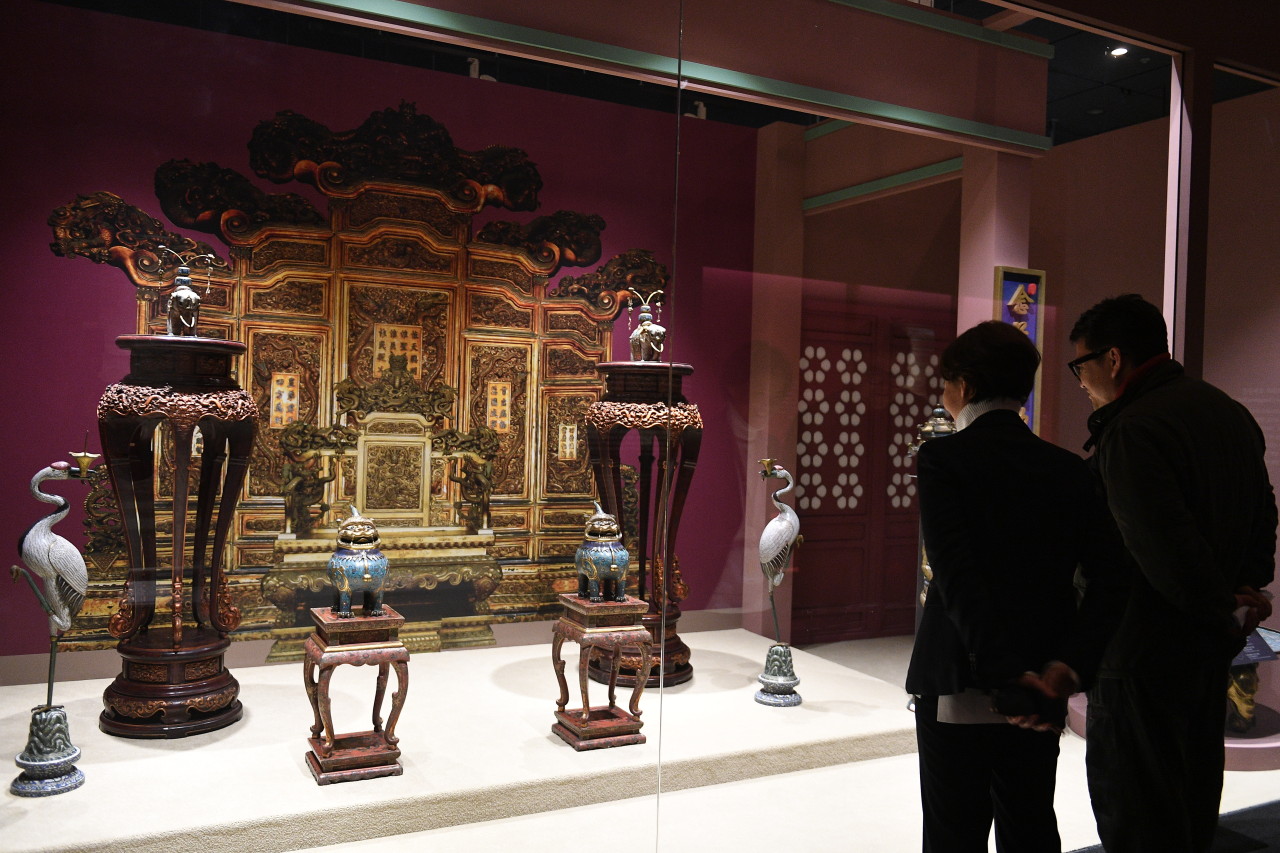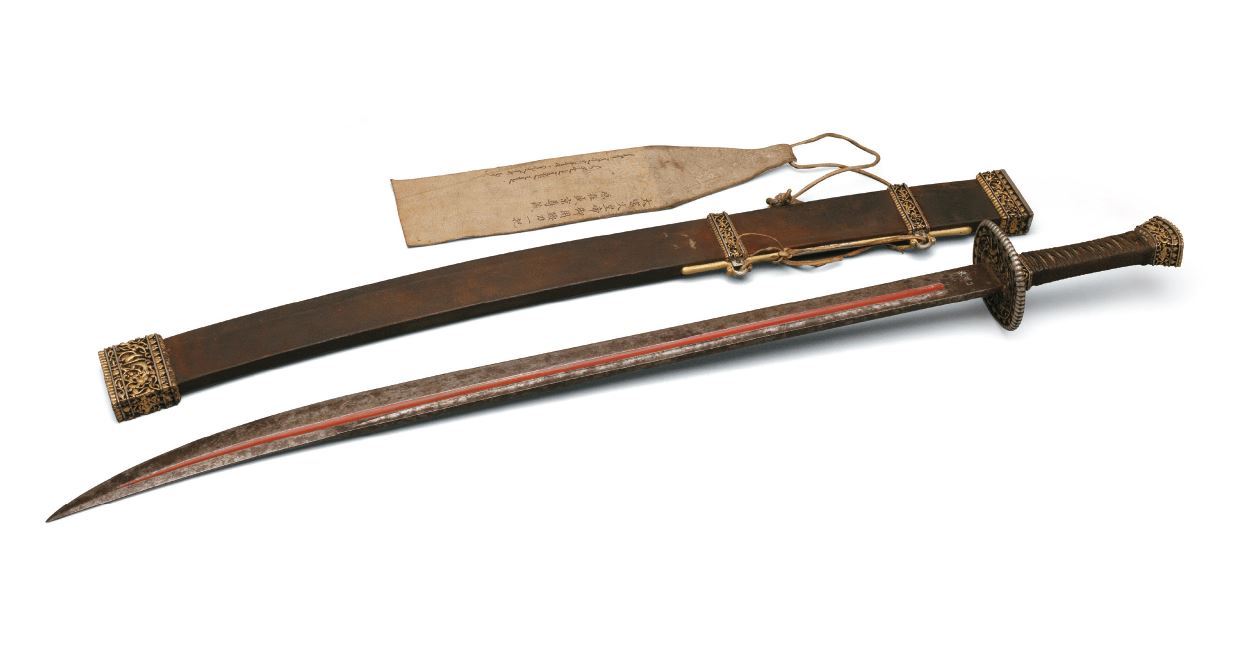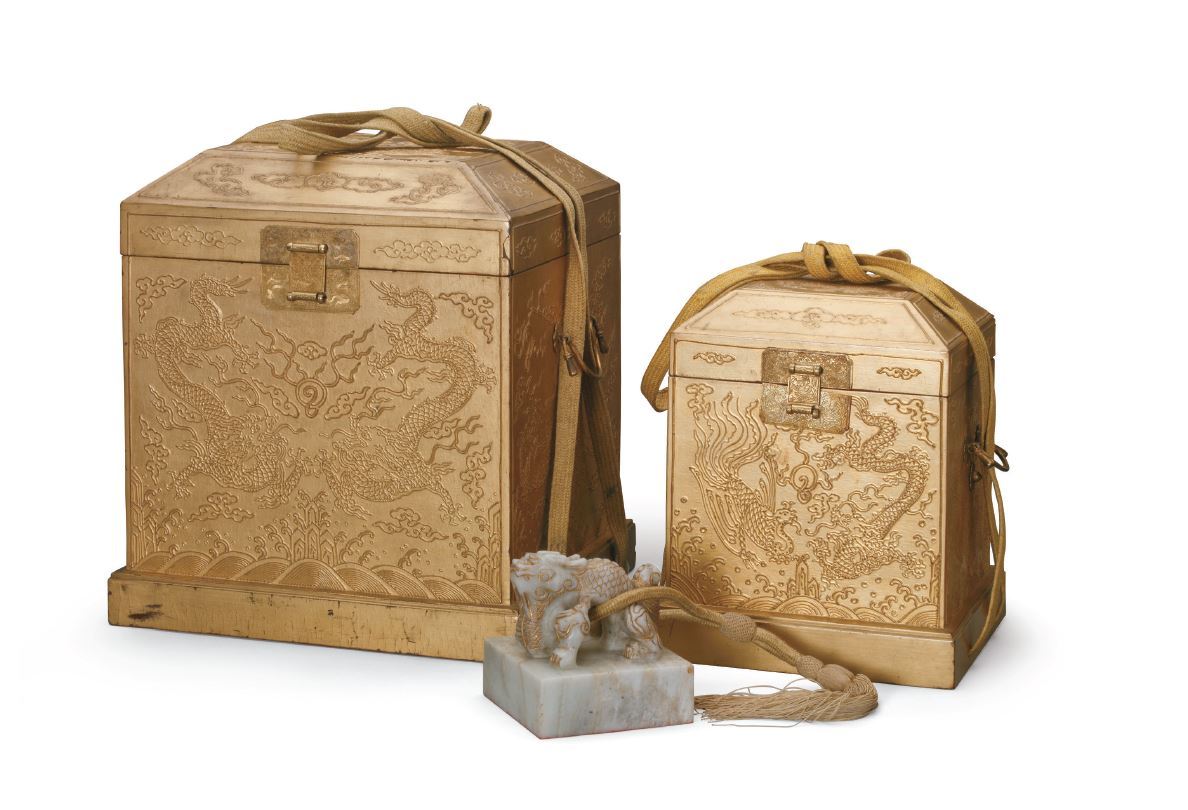The National Palace Museum of Korea is holding the exhibition “Treasures from the Shenyang Palace Museum,” featuring national treasures and relics from the Chinese museum in Shenyang.

The Shenyang Imperial Palace was the official residence of Nurhaci and Hong Taiji, the founder of the Later Jin Dynasty and Nurhaci’s son, who built the Qing Dynasty (1644 to 1911). After the capital was relocated from Shenyang to Beijing, the Shenyang Imperial Palace remained a secondary capital.
The exhibition in Seoul includes some 120 items from the Shenyang Palace Museum that offer a glimpse into life and culture in the imperial complex.
The items include royal attire, portraits of emperors, seals, jewelry, tableware and other daily objects used in the palace. A wooden ewer used to carry Mongolian milk tea, for instance, shows the influence from the Manchuria region where the founding family hailed.
Many works in the exhibition show the Manchurian influence on the Qing Dynasty. A saber of Hong Taiji, for example, has leather ornamentation with writing in both Chinese characters and Manchurian script.


The saber is one of the 13 first-grade national treasures from the Shenyang Palace Museum. Others include imperial seals and gold-painted containers with dragon patterns as well as straps used to carry them. The attire that Nurhaci and Hong Taiji wore is also among the national treasures from the museum.
The second half of the exhibition features artworks -- calligraphy works and paintings -- and religious objects that show how the Qing Dynasty embraced different ethnic groups and their cultures. Religious objects, particularly those produced in the Tibetan Buddhism style, show how the Qing Dynasty used the religion as a means to minimize backlash from the Mongolian and Tibetan territories over foreign rule.
The latest exhibition is part of an exchange program between the National Palace Museum of Korea and Shenyang Imperial Palace Museum. Next year, the Korean museum will send to its counterpart 100 national treasures and relics, including “The Sun, Moon and Five Peaks,” an emblem of royal authority produced in the late 19th century.
By Shim Woo-hyun (ws@heraldcorp.com)








![[Graphic News] More Koreans say they plan long-distance trips this year](http://res.heraldm.com/phpwas/restmb_idxmake.php?idx=644&simg=/content/image/2024/04/17/20240417050828_0.gif&u=)
![[KH Explains] Hyundai's full hybrid edge to pay off amid slow transition to pure EVs](http://res.heraldm.com/phpwas/restmb_idxmake.php?idx=644&simg=/content/image/2024/04/18/20240418050645_0.jpg&u=20240419100350)






![[From the Scene] Monks, Buddhists hail return of remains of Buddhas](http://res.heraldm.com/phpwas/restmb_idxmake.php?idx=652&simg=/content/image/2024/04/19/20240419050617_0.jpg&u=20240419175937)

![[KH Explains] Hyundai's full hybrid edge to pay off amid slow transition to pure EVs](http://res.heraldm.com/phpwas/restmb_idxmake.php?idx=652&simg=/content/image/2024/04/18/20240418050645_0.jpg&u=20240419100350)

![[Today’s K-pop] Illit drops debut single remix](http://res.heraldm.com/phpwas/restmb_idxmake.php?idx=642&simg=/content/image/2024/04/19/20240419050612_0.jpg&u=)